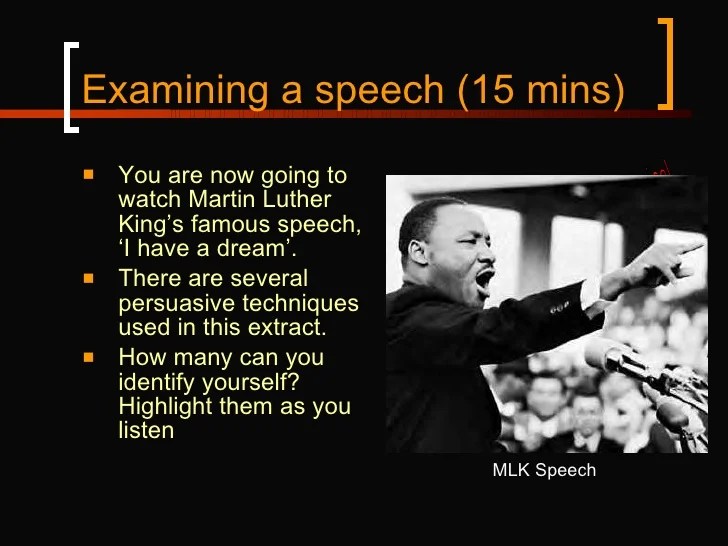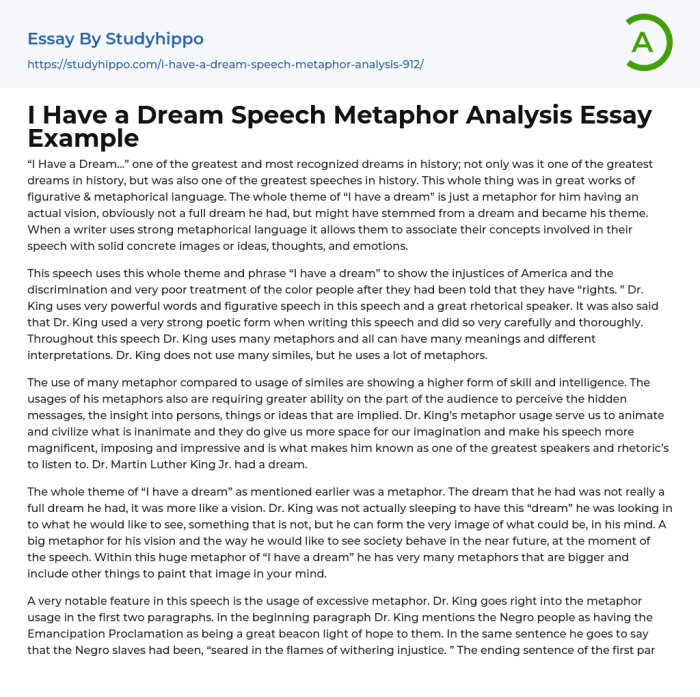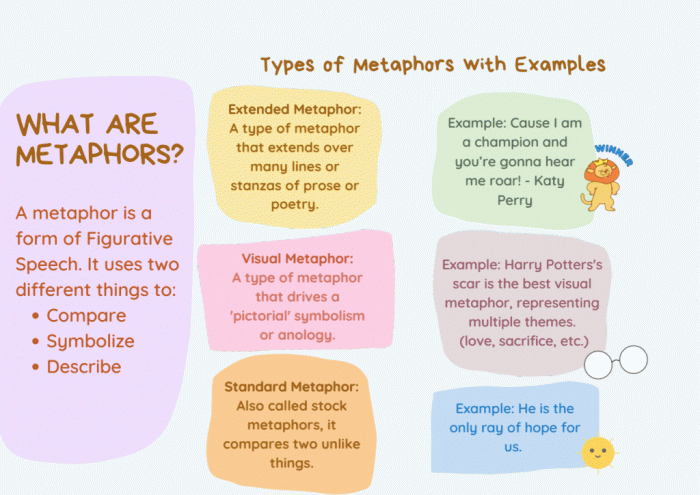Embark on an exploration of i have a dream metaphors, a literary device that transformed Martin Luther King Jr.’s iconic speech into a timeless masterpiece. Through vivid imagery and profound symbolism, King painted a picture of a future where equality and justice prevailed.
This speech not only challenged the limitations of the American Dream but also ignited a movement that continues to inspire generations.
Metaphorical Meaning of “I Have a Dream”

The “I have a dream” metaphor serves as the central thread that weaves together the fabric of Martin Luther King Jr.’s iconic speech. It embodies his vision of a future where racial equality and justice prevail, a dream that resonated deeply with the hearts of his audience.
The Dream as a Symbol of Hope
King’s dream represents a beacon of hope amidst the darkness of racial oppression. By using the metaphor of a dream, he conveys the notion that even in the face of adversity, it is possible to envision a better future. This dream serves as a source of inspiration and motivation, encouraging individuals to strive for a more just and equitable society.
Examples of King’s use of this metaphor include his references to the “dream of freedom,” the “dream of equality,” and the “dream of brotherhood.” These phrases evoke a sense of longing and aspiration, painting a vivid picture of the world he envisioned.
Metaphors, like the ones in “I Have a Dream,” can paint vivid pictures that inspire and empower. Just as the Israelites saw the Promised Land from Mount Nebo ( Deuteronomy 34:1-12 ), Dr. King’s dream gave a glimpse of a brighter future for all.
The Dream as a Call to Action
Beyond its symbolic significance, the “I have a dream” metaphor also serves as a powerful call to action. King uses it to challenge his audience to confront the injustices of their time and to work towards realizing his dream. He urges them to “make real the promises of democracy” and to “let freedom ring” throughout the land.
This call to action is further emphasized by King’s use of repetition and anaphora. By repeating the phrase “I have a dream” throughout his speech, he creates a sense of urgency and reinforces the importance of his message. The anaphoric structure of his sentences, such as “I have a dream that one day this nation will rise up and live out the true meaning of its creed,” builds momentum and drives his point home.
The Emotional Impact of the Metaphor
The “I have a dream” metaphor has a profound emotional impact on the audience. It appeals to their sense of hope, aspiration, and the desire for a better future. By using vivid imagery and powerful language, King evokes a sense of urgency and inspires his listeners to believe in the possibility of change.
The metaphor also creates a sense of shared experience and community among the audience. By using the first-person pronoun “I,” King invites his listeners to identify with his dream and to envision themselves as part of the movement for social justice.
The American Dream and “I Have a Dream”: I Have A Dream Metaphors

The American Dream has long been a symbol of hope and opportunity for people from all over the world. It is the idea that anyone can achieve success in America, regardless of their background or circumstances. However, the traditional American Dream has often been limited to white, middle-class Americans.
In his speech “I Have a Dream,” Martin Luther King Jr. challenged these limitations and presented a vision of an American Dream that was inclusive of all Americans.
King’s Vision of the American Dream
King’s vision of the American Dream was based on the principles of equality, justice, and freedom. He believed that all Americans, regardless of their race, religion, or gender, should have the same opportunities to succeed. He also believed that the government had a responsibility to ensure that all Americans had access to these opportunities.
King’s dream was not just a dream for the future. He believed that it was possible to achieve his dream in his own lifetime. He urged his listeners to work together to create a more just and equitable society. He said, “We must learn to live together as brothers or perish together as fools.”
The Implications of King’s Dream for the Future of American Society
King’s dream has had a profound impact on American society. His speech helped to inspire the Civil Rights Movement, which led to the passage of landmark legislation such as the Civil Rights Act of 1964 and the Voting Rights Act of 1965. These laws helped to break down the barriers of segregation and discrimination that had prevented African Americans from fully participating in American society.
King’s dream continues to inspire people today. It is a reminder that we must never give up on the fight for equality and justice. It is also a reminder that we must all work together to create a more just and equitable society for all.
Rhetorical Devices in “I Have a Dream”

Martin Luther King Jr.’s “I Have a Dream” speech is a masterpiece of oratory that has inspired generations. The speech is filled with powerful rhetorical devices that contribute to its effectiveness. These devices include:
Anaphora
- King’s use of anaphora, the repetition of a word or phrase at the beginning of successive clauses or sentences, creates a sense of rhythm and momentum. For example, he repeats the phrase “I have a dream” eight times in the speech.
- This repetition helps to build up the emotional intensity of the speech and to emphasize King’s message of hope and equality.
Parallelism
- King also uses parallelism, the repetition of a grammatical structure, to create a sense of balance and unity. For example, he says, “I have a dream that one day this nation will rise up and live out the true meaning of its creed: ‘We hold these truths to be self-evident, that all men are created equal.'”
- This use of parallelism helps to make King’s message more memorable and easier to understand.
Imagery
- King’s use of imagery, the use of vivid language to create a mental picture, helps to make his speech more concrete and relatable. For example, he describes the “sweltering heat” of the South and the “fierce storms” that African Americans have faced.
- This use of imagery helps to create a sense of immediacy and to bring the audience into the world that King is describing.
Metaphor
- King also uses metaphor, the comparison of two things that are not literally alike, to create a deeper understanding of his message. For example, he compares the struggle for civil rights to a “mighty stream of justice” that will “wash away the dam of segregation.”
- This use of metaphor helps to make King’s message more vivid and memorable.
Pathos
- Finally, King’s use of pathos, the appeal to emotion, helps to connect with the audience on a personal level. For example, he tells the story of a young girl who was denied entry to a school because of her race.
- This use of pathos helps to create a sense of empathy and to make the audience more receptive to King’s message.
These rhetorical devices are just a few of the many that King uses in his speech. These devices contribute to the power and effectiveness of the speech and help to make it one of the most memorable and inspiring speeches in American history.
Historical Context of “I Have a Dream”
The “I Have a Dream” speech was delivered by Martin Luther King Jr. on August 28, 1963, at the March on Washington for Jobs and Freedom. This event was a pivotal moment in the Civil Rights Movement, bringing together over 200,000 people to demand an end to racial discrimination and segregation.
March on Washington for Jobs and Freedom
The March on Washington was organized by a coalition of civil rights groups, including the National Association for the Advancement of Colored People (NAACP), the Southern Christian Leadership Conference (SCLC), and the Congress of Racial Equality (CORE). The march was intended to demonstrate the growing support for civil rights legislation and to pressure Congress to pass a comprehensive civil rights bill.
Impact of the Speech, I have a dream metaphors
King’s “I Have a Dream” speech was the highlight of the March on Washington. The speech, which was delivered from the steps of the Lincoln Memorial, called for an end to racial discrimination and segregation and for the establishment of a more just and equitable society.
The speech was a powerful and moving plea for racial equality, and it helped to galvanize the Civil Rights Movement and to bring about significant changes in American society.
Legacy of “I Have a Dream”

Martin Luther King Jr.’s “I Have a Dream” speech has left an enduring mark on American culture and the global civil rights movement. Its message of hope, equality, and nonviolent resistance continues to resonate and inspire people around the world.
Impact on American Culture
In the United States, the speech has become a touchstone for the ongoing struggle for racial justice and equality. It is often quoted and referenced in political discourse, media, and popular culture. The speech’s call for an end to racial segregation and discrimination has influenced countless laws, policies, and social movements.
Global Inspiration
Beyond the United States, “I Have a Dream” has inspired people around the world who are fighting for their own rights and freedoms. The speech’s message of nonviolent resistance and its vision of a just and equitable society have resonated with individuals and movements in countries such as South Africa, India, and Northern Ireland.
Unfulfilled Challenges
While the “I Have a Dream” speech has made a significant impact, many of the challenges that King identified in 1963 remain unfulfilled. Racial inequality, poverty, and discrimination continue to persist in the United States and around the world. King’s dream of a truly just and equitable society is still a work in progress.
FAQ Insights
What is the significance of the “I have a dream” metaphor?
The “I have a dream” metaphor represents King’s vision of a future where racial equality and harmony prevail, free from discrimination and injustice.
How did King use metaphors to convey his message?
King employed metaphors such as “the mountaintop,” “the promised land,” and “the arc of the moral universe” to evoke powerful images and emotions, making his message more relatable and impactful.
What is the legacy of i have a dream metaphors?
i have a dream metaphors continue to inspire and motivate people around the world, reminding us of the importance of fighting for justice and equality.